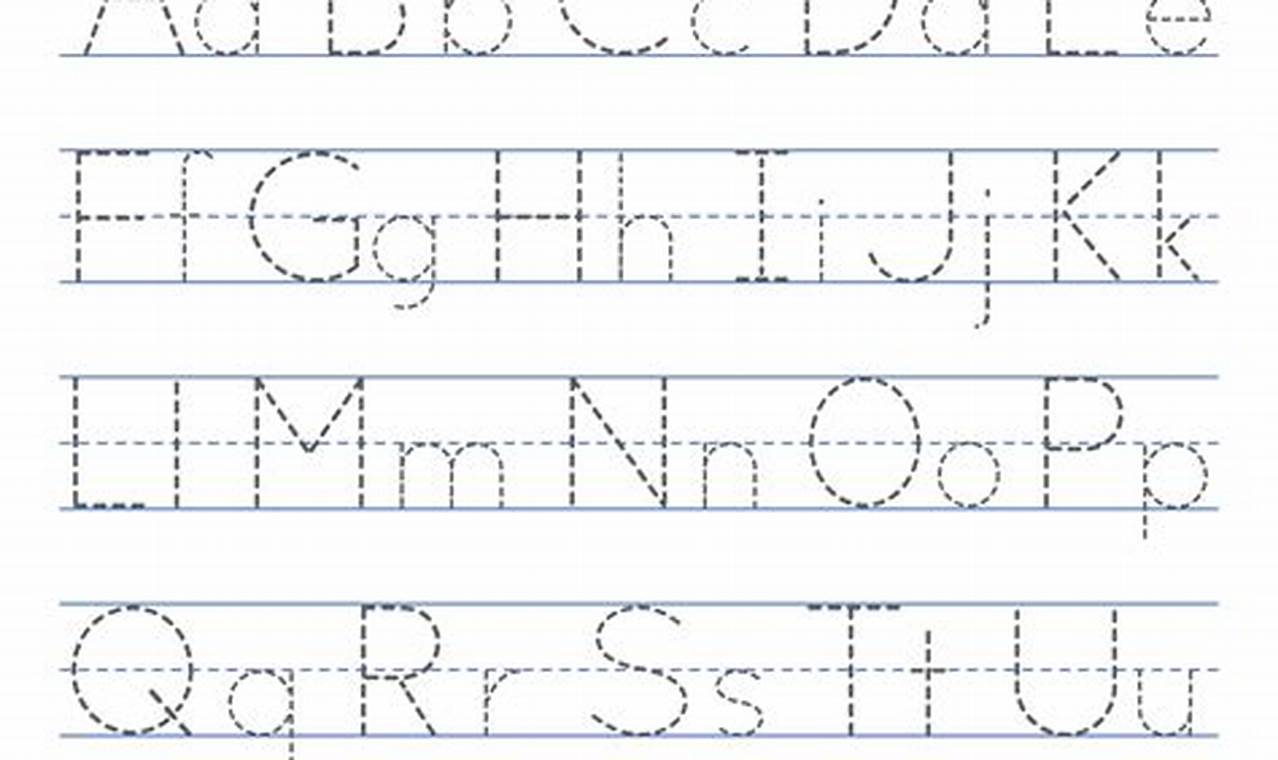Mastering handwriting is a foundational skill, and using worksheets designed for letter tracing is a fun and effective way to build this ability. A strong command of handwriting helps children communicate effectively and forms a crucial base for all future writing endeavors, including, eventually, email communication. Letter tracing provides the initial guidance needed to form letters correctly and consistently.
The primary advantage of letter tracing worksheets lies in their ability to improve fine motor skills. Tracing strengthens the small muscles in the hand, which are essential for precise movements. Furthermore, these worksheets enhance letter recognition by reinforcing the visual memory of each letter’s shape. As children practice, they also develop hand-eye coordination, contributing to overall cognitive development. The worksheets also provide a solid foundation for future digital literacy, as correct letter formation translates to more accurate typing and written digital communication.
These specific letter tracing worksheets focus on letters relevant to email writing, such as those used in common greetings (Dear, Hello), closings (Sincerely, Regards), and simple instructions (Please, Send). Each letter is presented with clear, dashed lines, guiding the child through the correct stroke order. Bold starting points help children begin each letter accurately. Ample space is provided next to each traced letter to allow for independent practice and reinforcement of the learned formations.
To maximize the effectiveness of this worksheet, it is recommended to start with a comfortable writing tool, such as a thick pencil or crayon, which is easier for small hands to grip. The child should trace each letter slowly and carefully, paying attention to the directional arrows. Positive reinforcement and encouragement are key to keeping the child engaged. If the child becomes frustrated, break the task into smaller sessions. Adults can initially demonstrate the tracing process for each letter to ensure proper technique.
To further enhance the learning experience, supplement the worksheets with other resources. For example, consider incorporating phonics activities that connect letter sounds with their written forms. Explore additional alphabet worksheets available on Kidtraces.com for continued practice. Educational games and apps that focus on letter recognition and formation can also be valuable tools. Reading aloud together also reinforces letter recognition in a contextual setting.
Letter tracing worksheets are invaluable resources for developing essential handwriting skills and laying the groundwork for effective communication. By practicing letter formations in a structured and engaging way, children build confidence and competence in their writing abilities. Download this worksheet today and encourage the young writer in your life to embark on a journey of skill development. Be sure to explore more free worksheets at Kidtraces.com to support continuous learning and growth.
